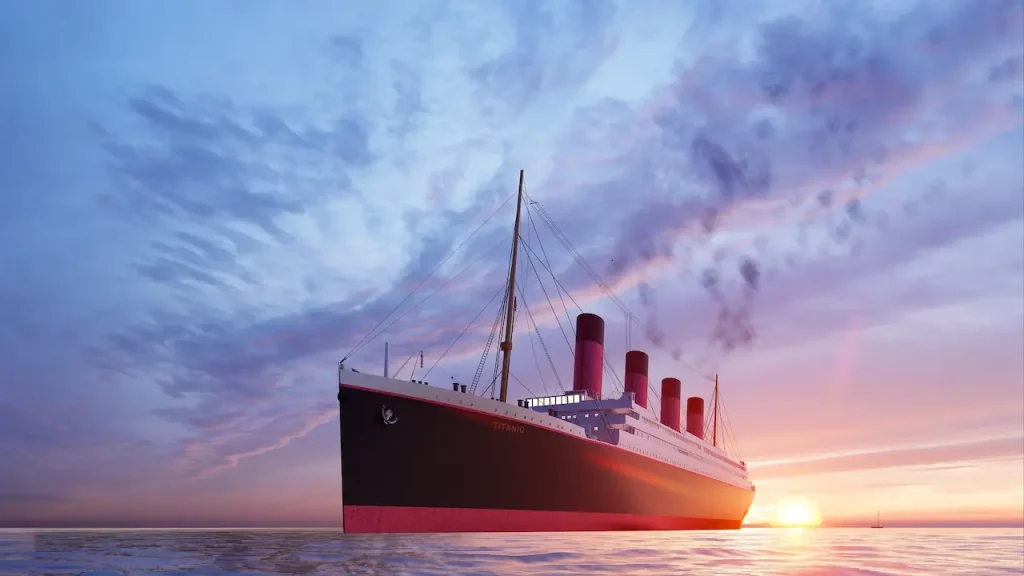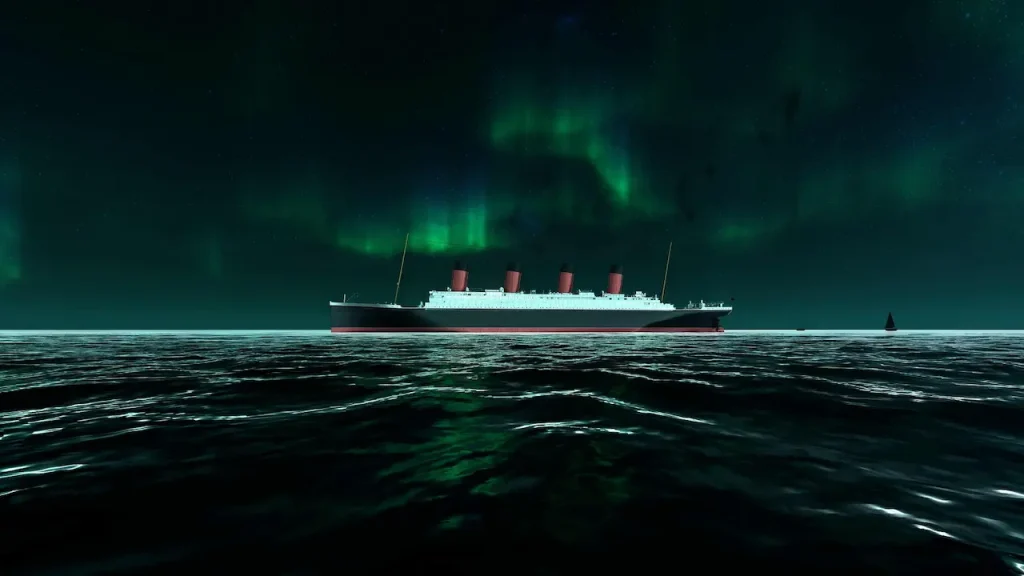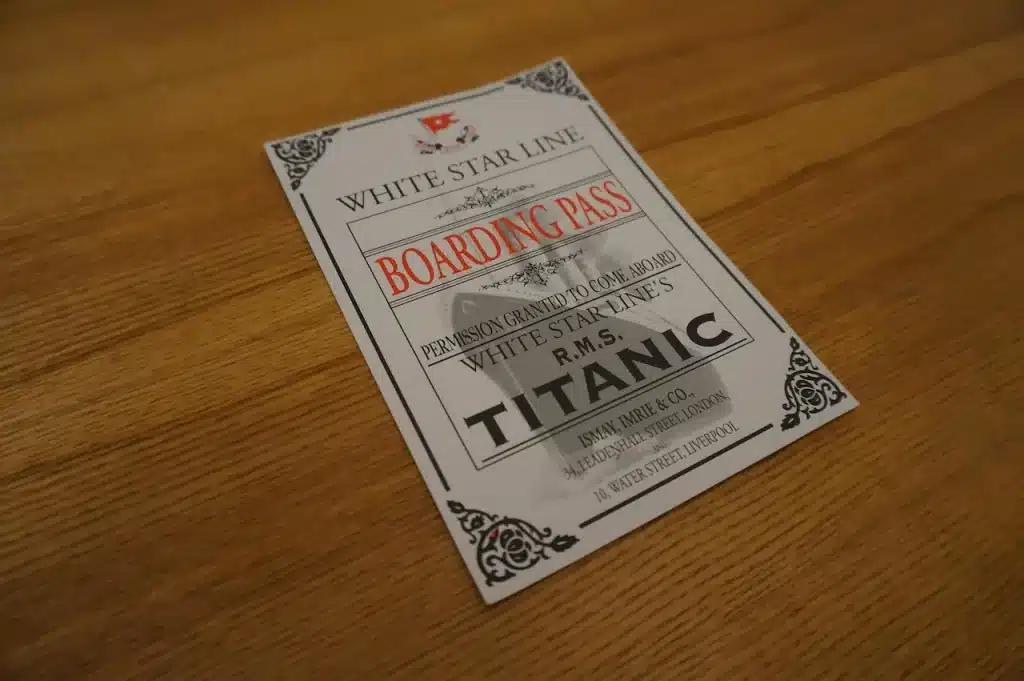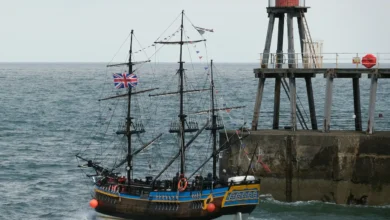The Untold Story Of Building The Titanic
The RMS Titanic, as the largest man-made object at the time and the largest moving object in history, was an engineering marvel. Building the Titanic took less than two years, and more than 15,000 skilled workers were involved, including engineers and carpenters. The project, which was built at the Harland and Wolff Shipyard in Belfast in Northern Ireland, was one of maritime history’s most ambitious. The cost to build the Titanic at the time was approximately 1.5 million pounds sterling, which is equivalent to more than 100 million dollars when adjusted for inflation.
The White Star Line built the Titanic alongside RMS Olympic as part of its plan to dominate the transatlantic travel market. The ships were praised for their design and luxury, but the construction process wasn’t without its challenges. Building such a massive ship was fraught with danger and pressure. The Titanic was a symbol of industrial progress and human achievement despite all of these setbacks.

The Reason Behind the Titanic’s Construction
White Star Line built the Titanic along with sister ships Olympic, Britannic and Mauretania as part of its strategy to compete against the Cunard Line, their main competitor. Cunard was operating two of the most famous ocean lines in the world at the time: the Lusitania and the Mauretania. Lusitania’s elegance and comforts were celebrated, while Mauretania gained international fame for holding the Blue Riband, an unofficial award given to the fastest ship that crossed the Atlantic Ocean. Mauretania held this record from 1909 to 1929.
White Star Line did not try to compete with Cunard in terms of speed. Instead, they took a completely different approach. J. Bruce Ismay wanted to dominate the transatlantic travel market by focusing on comfort, size and reliability. The result was three enormous, opulent vessels designed to provide the most luxurious accommodation on the oceans. These ships would be able to cater for the wealthy elite, as well as middle-class and immigrant travellers. They would set a new standard in ocean travel.
Titanic, the crown jewel in this plan, was a floating palace that combined technological innovation and the grandeur of five-star hotels. Her construction was not just a reaction to the market, but also a sign of national pride in Edwardian Britain.
Building The Titanic
The Titanic was built in a Graving Dock (also known as a Dry Dock), a large enclosed basin which could be drained to give workers access to the ship hull. It was easier to work safely on the lower parts of the ship using this method. Harland and Wolff was the company that built the Titanic. They operated three dry docks, Hamilton, Alexandra and Thompson. The Thompson Dock, the largest of all dry docks, was specially designed for the Titanic’s enormous size. The Thompson Dock is still open today to visitors, as part of Belfast’s Titanic heritage attractions.
Alexander Carlisle, a naval architect born in Ballymena, was the chief architect of the Titanic, Olympic, and Britannic. Carlisle was responsible for designing the interior layout of the ships and incorporating safety features like lifeboats and compartments that were watertight. Carlisle retired from his position in 1920 and was replaced by Thomas Andrews, who oversaw the final design and construction of the ship. Andrews died tragically when the Titanic sank on April 19, 1912.

Titanic Construction Begins
The Titanic construction officially began on March 31, 1909, when the first keel plate was placed at the Harland & Wolff Shipyard located in Belfast (Ireland). The beginning of the largest maritime engineering project of the 20th Century was marked by this event. The Titanic was constructed alongside her sister ship, RMS Olympic, which began construction only three months before. Over 15,000 workers were employed to build the two ships simultaneously, an unprecedented feat. These included engineers, craftsmen, and steelworkers.
Eight workers died during the construction of the Titanic. They were working under extreme pressure in hazardous conditions. The project was still a source of pride in Belfast and the shipyard despite the dangers.
When the Titanic was built, there were no facilities around the globe that could accommodate such a large vessel. Harland & Wolff expanded their shipyard to accommodate this. The shipyard demolished 3 smaller slipways and built two larger ones for Titanic & Olympic. They also built two massive steel frames known as Arrol Gantries. These were fitted with Moving Cranes and Lifts to allow workers access to every part of the ship during construction. It also purchased a 200-ton floating lift, which was one of the biggest of its kind. This crane was used to install heavy machinery, such as the Titanic’s massive engines and boilers.
The transformation of this shipyard on a large scale was an impressive feat and showed the ambition of Titanic, not just to build a vessel but to redefine shipbuilding’s limits.
How much did the Titanic cost to build?
The Titanic was built at a cost of approximately $7,500,000. This information was given by Bruce Ismay, the chairman of the White Star Line, during the U.S. investigation into the sinking. The amount was converted into PS1,500,000 at the current exchange rate of 5 to 1.
The cost of the Titanic, adjusted for inflation and current currency values, would be around 166 million USD (or PS120million GBP) today.

How many people built the Titanic?
About 3,000 employees worked directly on the Titanic’s construction at the Harland & Wolff Shipyard located in Belfast in Northern Ireland. The total workforce involved in the project was estimated to be more than 15,000 men, including those who were employed on the Titanic as well as her sister ship, Olympic.
The shipbuilders were welders and riveters as well as labourers. Many of them worked long hours under often hazardous and physically demanding circumstances. At the time, there were few safety regulations, and construction resulted in the deaths of eight people. The largest, most luxurious passenger vessel in the world was built by these men despite the hardships.
When was the Titanic launched?
On May 31, 1911, the Titanic launched in Belfast. It attracted a crowd of about 100,000 spectators. The lucky ones who had tickets were able to watch the launch from the slipway. Thousands more lined up on the riverbanks to see the event. The ship, after gracefully sliding into the River Lagan, was then towed by a tugboat to the Thompson Dry Dock. This facility, at the time the largest of its type in the world, would allow the vessel to be equipped and given its interiors, machinery, and finishing touches.
The Titanic was designed for power and grandness. The Titanic was powered by a pair of nine-meter-tall reciprocating steam engines as well as a central turbine that turned three massive propellers. The 29 steam boilers were powered by 159 coal-fired kilns. This allowed the ship to achieve speeds up to 24 knots.
Titanic’s first-class accommodations were characterised by unparalleled luxury. This included custom-built fittings and gold-plated light fixtures. Even the facilities in second class were comparable to first-class accommodations. Third-class passengers still enjoyed a high level of cleanliness and comfort. The Titanic had ten decks. Only eight of them were open to passengers. The two lowest decks, the orlop deck and the tank top, were reserved for cargo, engines and machinery.




